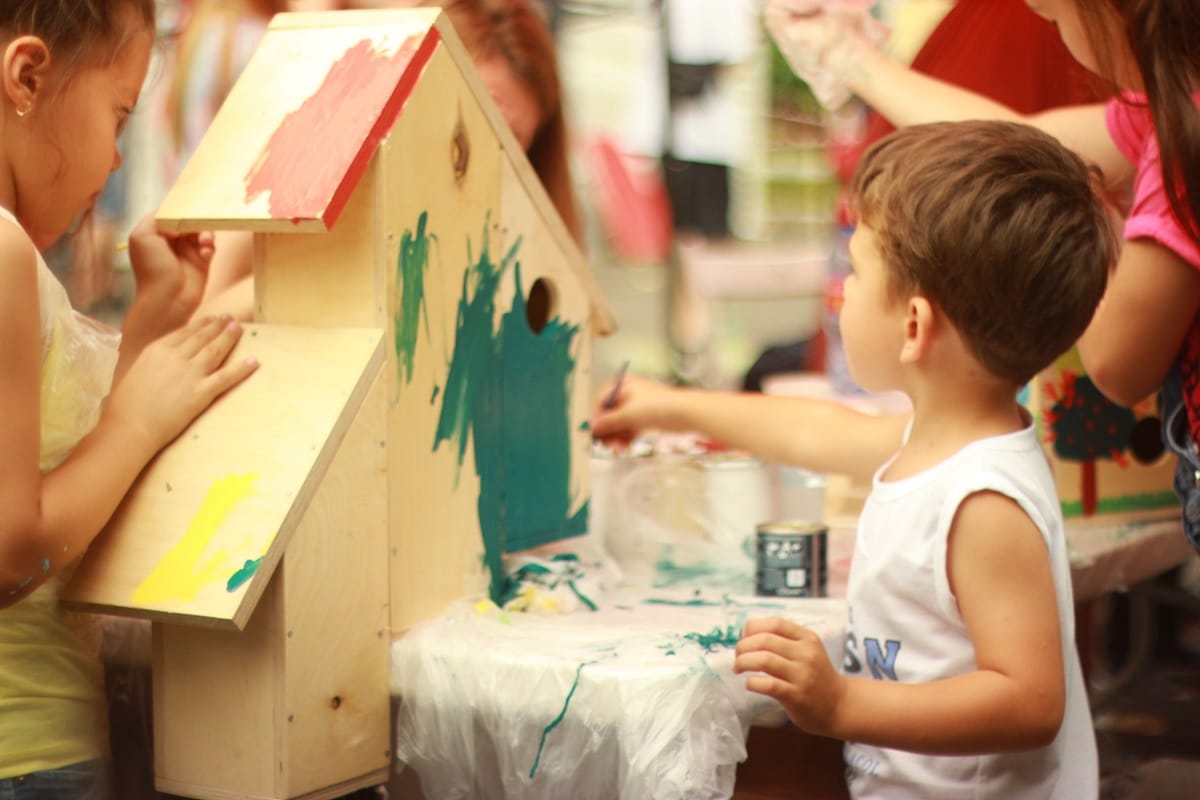Preschool costs vary depending on what you’re looking for and where you live. According to the (NACCRRA), i.e. National Association of Child Care Resource & Referral Agencies, the average cost of preschool in US ranges from $4,460 to $9,158 per year. As well as private preschools for children aged three to five years old. This article will give you some more information about the cost of preschool.
Preschool can be an expensive endeavor. Preschool helps them develop language and fine motor skills. It will help them during their formal schooling years. It’s important to know how much it costs before you enroll your child. So that you’re not surprised when tuition comes due. The cost of preschools is depended on where you live? How many days a week your child attends? and What type of school?
There are so many options out there for parents when it comes to choosing the right preschool for their kids. The average cost of full-time day toddler child care or infant child care also depends on what type of program your child needs. For example, if your child has special needs or is enrolled in an intensive language immersion program, the price will increase accordingly.
How much should preschool cost?
This is a difficult question to answer because costs vary by geographic area and the type of preschool. For example, middle-class families who send their children to state-sponsored preschool may pay as little as $3,000 per year. On the other hand, some private preschool centers can cost around $10,000 per year. The cost of preschool varies widely.
The National Association for the Education of Young Children (NAEYC) provides some insight into preschool costs. According to NAEYC, the average full-time cost for all types of preschool programs was $5,806 a year for a four-year-old child and $6,627 a year for a three-year-old. And preschools can set their cost range according to where they live.
Costs in center-based programs varied from about $4,900 to more than $14,000 depending on the state. For example, in Missouri, you may pay $6,950 for a year of preschool and half the amount you will spend in New York City.
How does preschool cost for a month?
The average preschool fee for a month is approximately $372 to $1100. It depends on where you live and how much experience a teacher has. In major cities, a preschool costs a lot more than a center in a small town. A good preschool for 2-5-year-olds typically will cost around $400-800 per month.
A preschool with less experienced teachers might cost $372-450. If you’re looking for a bilingual preschool or one with both full-day and half-day sessions. Those options will increase the monthly fee. If your child needs special therapies such as physical therapy, occupational therapy, etc. Then your child’s preschool fees could rise even more.
Preschool costs are typically divided into two major categories: tuition and supply fees. Tuition is the fee that parents pay for the child’s attendance at school. It covers such things as instruction, supplies, and field trips. Supply fees cover materials and equipment like crayons, construction paper, and so on.
If you have more than one child or you have a limited income, ask about scholarships or financial aid. Many preschools offer special discounts for siblings, low-income families, and multiple children enrollment. For instance, they may give you a break on the cost if your child will attend both sessions of the day at their school.
What is the range of preschool costs per year?
The average preschool fee for a full year is approximate $5,806 to $18200. The cost varies based on the state or city you live in. Whether the preschool is private or not, and other factors. In general, preschool costs are rising each year.
For example: in the city of Chicago, Illinois; preschool fees can range from $1500 to $6500 per year. These costs are based on state and local taxes. It all depends on the school district you live in. Since it is responsible for the majority of your child’s education until they reach kindergarten. And Us government also provides a range of fees for kindergarten teachers.
In 2011, Center for American Progress (CAP) research found that average preschool fees were $5,806 a year. This figure was based on the annual cost of the average private preschool and child care center. There isn’t a specified limit as to how much a preschool may charge. Some public preschools offer fee assistance to those families who qualify. This can be based on annual household income.
Childcare costs are the average annual out-of-pocket expenses to send your child to preschool. The preschool cost for child care is based on several factors including location, school district, and state. The U.S. Department of Health and Human Services has released a guide regarding child care in America.
What is the preschool cost for infants or toddlers?
For the universal preschool-age children and low-income parents, the federal government provides many quality programs. Same as there is also a curriculum for infant and toddler care. Preschools generally agree that an infant and toddler cost more than preschool-aged young children.
This is because their mental, physical, and social growth are at their peak stages. They require constant care and supervision. In fact, two to three times more child care is required for infants and toddlers compared to preschool-aged children. A large metropolitan area will generally have a higher cost than a smaller town. The cost of preschool for toddlers and infant care is average, depending on the age of the child, geography, and time spent in care.
The difference in the average annual cost for infants and toddler child care is $4,860 to $10,000 per year. The costs can run from $45 to $100 a week. The cost of toddler or infant child care varies depending on the state, city, or town. And the type of the facility (for example, in-home care vs. daycare). Whether you’re looking for part-time or full-time center-based child care.
How much does it cost for a nursery child in a preschool?
For child early education there are so many high-quality preschool are available. And the wages of preschool teachers are more than parents spent on their children. The cost of nursery child care in a preschool depends on the type of facility you choose. Facilities that are within private homes will cost less. While those were built for commercial purposes. They having many enrollees will definitely be more expensive.
There are center-based daycares, preschools, and church nurseries. Their fees range from $40 to $100 per day. If you want a city, it will cost more. That is because, in a city, the cost of living is higher than in a village or countryside. Parents looking for private, in-home child care can expect to pay $13,682 per year ($1473 weekly) on average.
The child care costs for preschool education are around $9,000 to $20,000 per year. This depends on the type of center you choose and where you live. It can be less or more. Some facilities offer discounts if you pay your bill every month instead of every quarter, as well.
Did preschools costly than daycare?
Well, if you are in the United States, it is almost impossible to say no to this question. All over the country, the average price of daycare for infants is $4,860 per year while preschool costs an average of around $10,562 annually. Despite many parents’ misbeliefs that daycare is more expensive, the truth is that both options are quite pricey.
Although babies don’t need to be enrolled in preschool classes. They still have to be looked after by some other individuals on a daily basis. Thus, every parent has to find child care for his or her kid or kids even before they are old enough to be taught. Even though center-based daycare is less expensive than preschool. The mean cost of both options may seem high for a parent on a budget who is looking after just one child.
For many families pay decision between daycare and preschool will depend on their financial situation. As well as their desire to have their kids enrolled in a preschool program. In most cases, this decision is made on the basis of affordability as opposed to educational value for their children. A study by the University of Michigan says that for parents who pay full tuition, preschool can be more expensive than daycare.
What are factors that affect the quality of early childhood programs?
According to education statistics, there are several factors that could potentially play a role in ensuring high-quality educational settings for younger children. Including age-appropriate training, class size, and equipment. Below you find the factors that affect the quality of developing child programs. And they are:
1 Family Income:
Finding an affording preschool is for low-income children is quite difficult. Family income is one of the most important factors in determining child outcomes. The more a family earns, the better a child’s cognitive and noncognitive outcomes. This is especially true of children from higher-income families who attend preschools that have lower teacher-student ratios. In addition, working-class families are often unable to access a center-based program due to the cost.
2 Access of book and play material:
Children who attend high-quality early childhood programs typically have access to a wide range of books and play equipment. In addition, the learning environment is more structured than in low-quality center-based care. Preschool teachers often provide an enriched curriculum. As part of their efforts to implement specific educational goals. That’s why the access of book or play material affect the quality of early childhood program.
3 Quality of Child care:
The child care center quality also affects the childhood programs. The quality of the child care center affects the type and amount of learning. As well as emotional and physical development among young children. The program’s content and method can affect the types of skills that younger children will learn. For the child, betterment preschool should focus on the quality of care they provide.
4 Staff and child ratio:
As well this is the common factor that affects early education research is Staff and child ratio. Lower ratios allow for increased individualized attention. Which can be particularly beneficial to at-risk students. A lower student-teacher ratio also makes it easier for teachers to provide more opportunities for small-group instruction. As well as low teacher wages also affected the ratio of child care employment.
5 Curriculum for young child age group:
Curriculum regarding child’s age also affects the early childhood policy. There are so many child care subsidies are available in a center-based infant or daycare center. Research has demonstrated that the youngest children at the age of 2 to 3 are most receptive to learning new things. And many schools only focus on the curriculum provided by the national center.
The conclusion!!
For some parents, the cost of preschool is a major concern. Preschool can be expensive and there are many factors. That goes into calculating how much it costs for your family. Some schools offer discounts if you enroll two or more children at once. Others have scholarships available to help offset tuition.
The best way to find out what kind of financial aid may be available in your area is by contacting local schools directly or visiting their website with information about pricing options on hand. In addition, certain states provide subsidies as well as tax credits that will reduce the overall expense incurred for this type of schooling option, respectively.











